GOING THE DISTANCE
Disabling the wheelchair myth — forging a path to inclusive heritage in SA
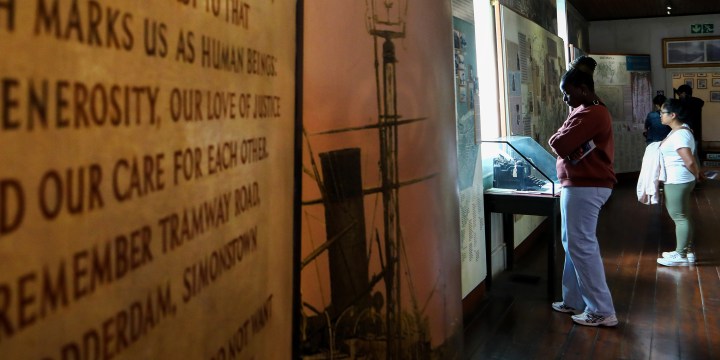
Under the guidance of two visually impaired women, the District Six Museum is working to ensure inclusivity for people with physical impairments beyond the norm of providing wheelchair ramps.
Lois Strachan roams over the contours of the words that drew South Africa’s artificial boundaries with her open hands: Europeans Only. Just like the commemorative space she is visiting, her own world is mapped by patterns and textures from memories more indelible than ink.
Strachan is a woman who confronts cities with her body, and she senses each step of the flight of stairs with street names in the District Six Museum in Cape Town, one of South Africa’s most significant cultural spaces. She breathes into the first-hand accounts of a past life on the 300m-long memory cloth.
Strachan, a disability adviser, lost her sight at the age of 21. Over the course of the past 30 years, it is exactly this ability to experience the world differently that set her on a path to advocate for inclusivity at nearly every turn.
Along with photographer Karren Visser, who is partially visually impaired, she is inspired to lead and take on projects that let seeing people in on their worlds.
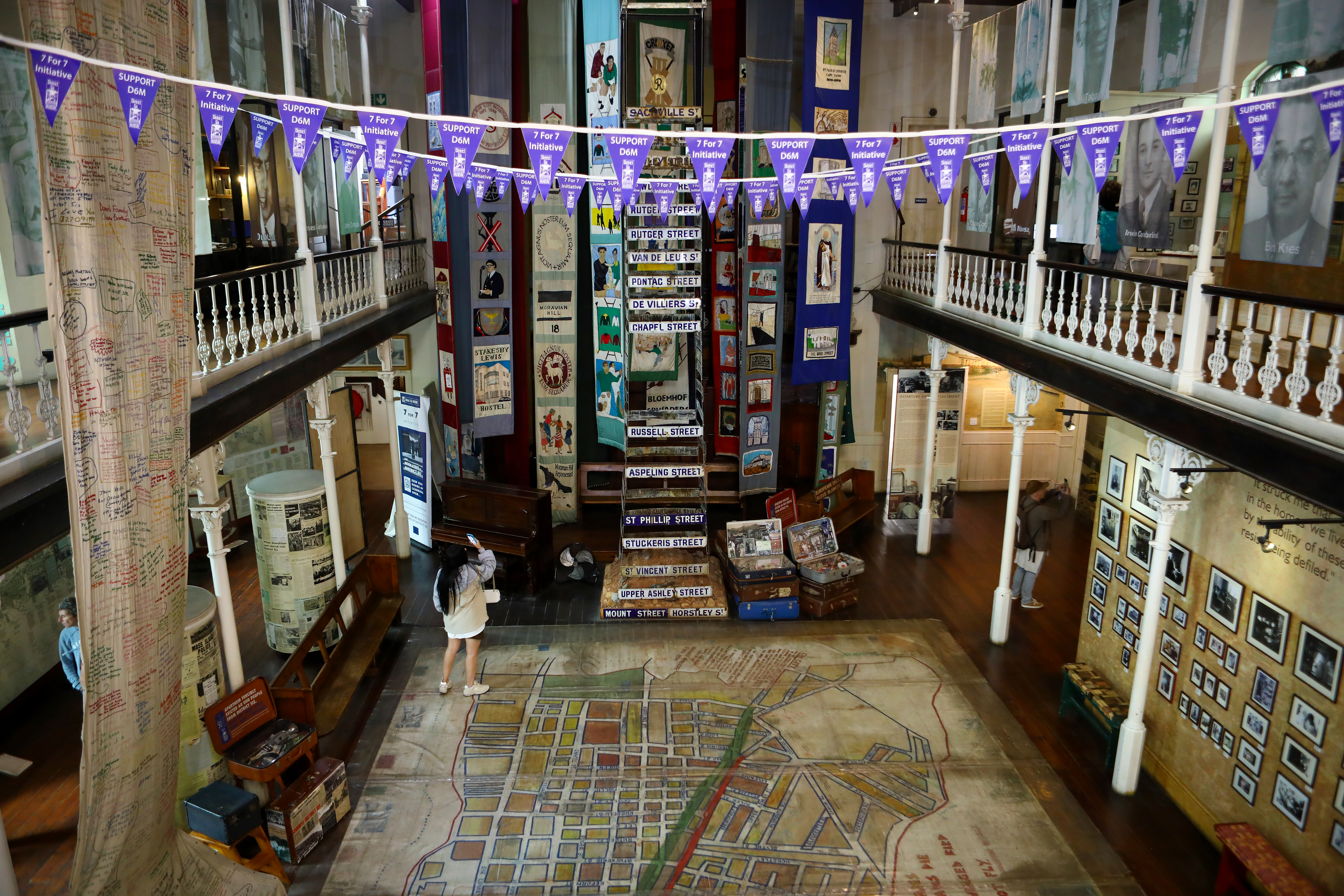
An aerial view of the interior of the District Six Museum shows a large street map of the historic area overlaid with a protective plastic cover on the floor. Towards the back stands a tower of street names also taken from the area before everything was torn down. Cape Town on 24 April, 2023. (Photo: Shelley Christians)
Strachan and Visser share a passion for understanding the complexities of South African history and culture, and combining it with what they feel is their collective responsibility to reveal abstruse parts of the world to more people.
In 2022, they applied for and received a micro award — essentially a grant — from the British Council’s Unlimited programme, which supports artists with disabilities to create and present work across all art forms.
“We’ve used this grant to invest in a project wherein we assess the ways in which we can open South African heritage spaces further still,” explains Strachan.
Over the course of the past four months, they assessed the exhibitions in the District Six Museum and hosted a multisensory workshop for staff.
Visser was drawn to the space because she had worked in the University of Cape Town’s historical archaeology research unit shortly after graduating from university.
Strachan, in turn, was eager to work with an independent museum that may not otherwise have opportunities to explore the topic of accessibility.
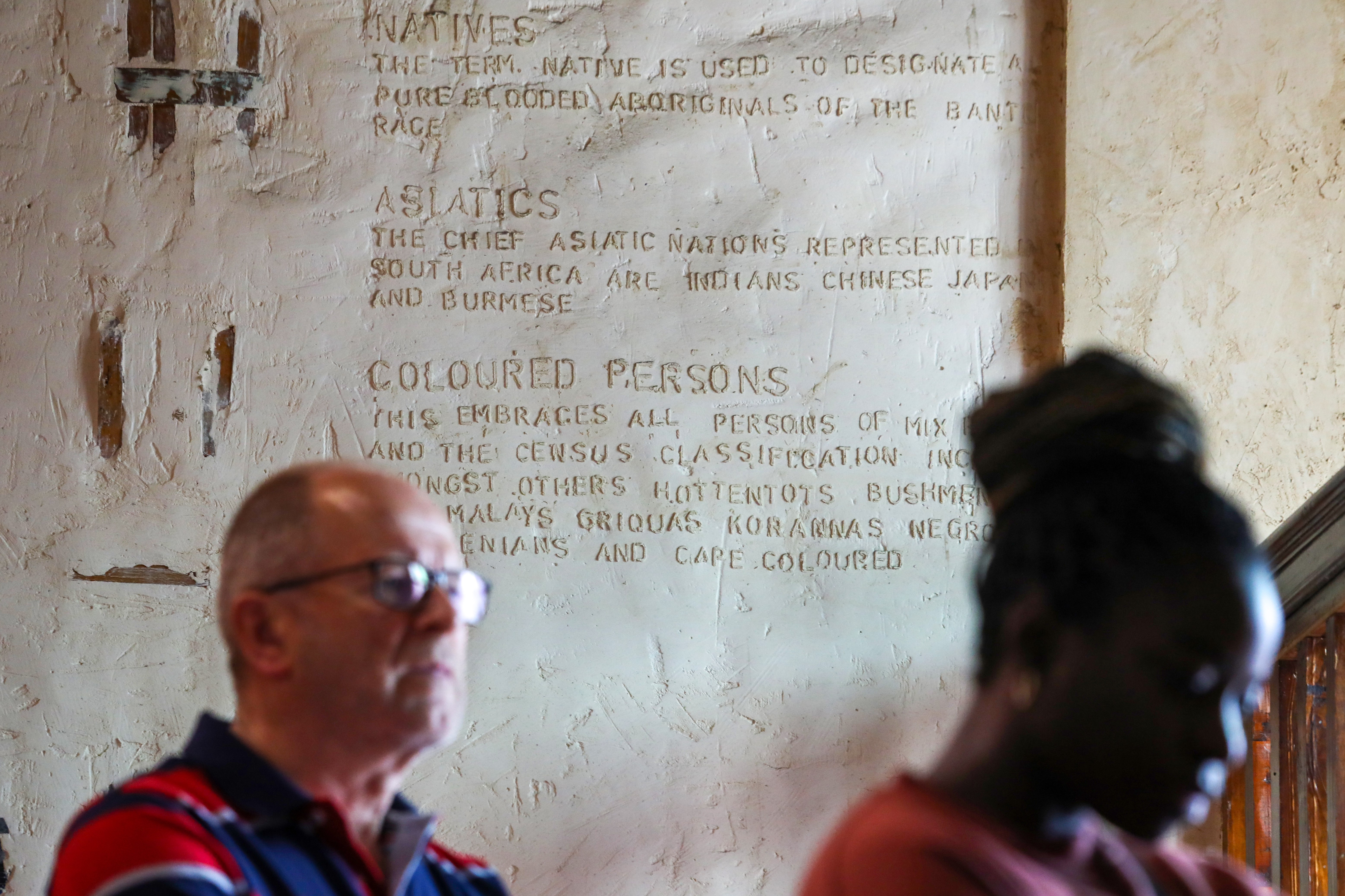
An installation with writing engraved in its plasterwork is one of the pieces that are accessible to people with visual impairments at the District Six Museum, Cape Town on 24 April, 2023. (Photo: Shelley Christians)
Inclusive heritage
The District Six Museum is housed in a former Methodist Church building and has become a living memorial to the forced removal of more than 60,000 people during apartheid. Strachan and Visser’s project, titled “Inclusive Heritage ‘Kanala’ (please)”, is an exploration of the ways in which the museum’s important social role can be augmented even further.
As museums have multifaceted potential to fascinate and inspire, “Inclusive Heritage ‘Kanala’ (please)” provides an insightful methodology that seeks to highlight creative ways in which to tell the stories of District Six while taking into account the needs of people with disabilities.
To achieve their objective of enhancing the museum’s existing exhibitions, they engaged exhibitions manager Tina Smith with the view to hosting an assessment and phygital (the integration of physical and digital elements) workshop with museum staff.
“When Lois and Karren approached us, it raised my awareness around how we could reconceptualise our future exhibition design plans with a more inclusive look at accessibility for the visually impaired,” says Smith.
She explains that while engaged with Strachan in person and Visser online, she wanted to interrogate “other very real challenges” — specifically ones “like the commonly held belief that disabled people only need and use wheelchairs and wheelchair ramps”.
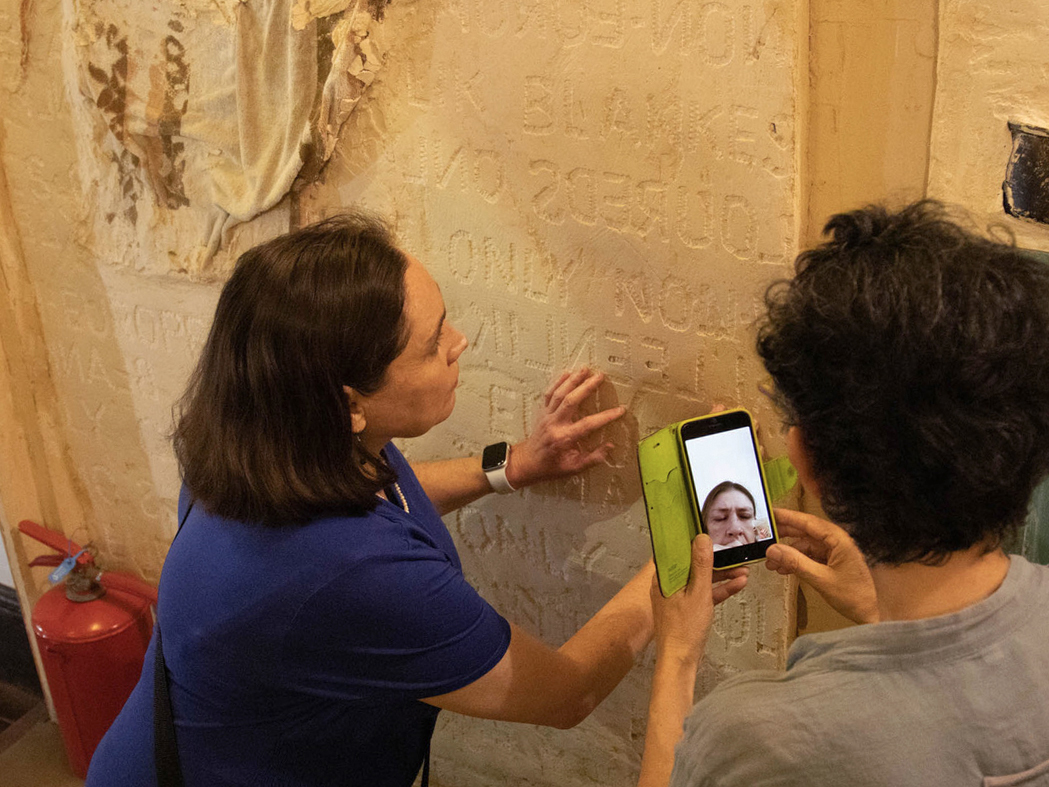
A blind woman kneels in front of a wall in the museum to touch the writing engraved in its plasterwork. This happens as a second woman looks at someone on her cellphone who is observing this exploration via WhatsApp. (Photo: Craig Strachan)
The District Six Museum is located on Buitenkant Street and consists of two floors showcasing infographics, photos, news reports and other artefacts documenting life in the city’s sixth municipal district in 1867.
Strachan says it was clear at the outset that the museum was committed to creating as inclusive an experience as possible.
“Their emphasis on audio, including the use of sound showers, site guides sharing their experiences with visitors, and the work done on a podcasting project is a testimony to this,” she adds.
The obvious challenges, however, are the strongly visual elements of many of the exhibits. “Some of the exhibits are based on photographs and written documentation, which is difficult to present in an easily accessible format,” explains Strachan.
To this end, she explored the creative processes of making installations in the museum accessible to people who are totally or partially visually impaired.
They were particularly drawn to District Six’s rich drag culture, delving deep into the exhibition Kewpie: Daughter of District Six, which opened in 2018.
Kewpie, who died in 2012, was a hairdresser and celebrated figure in the highly visible queer community in District Six.
Multisensory storytelling
Strachan and Visser presented an accessibility workshop to museum staff and the Seven Steps community, which consists of District Six residents.
The Seven Steps community is the museum’s primary reference group and main participant in storytelling, visitor engagement and intergenerational educational programmes. The workshop involved charting the extensive detail required to share stories with visually impaired people.
In the interactive workshop, museum staff and the Seven Steps community members considered the experience of being blind or partially blind and were taught how to engage with someone with a sight impairment. “We described the experience of visiting museums and what makes a museum either a positive or challenging experience for someone who is blind or partially blind,” says Strachan.
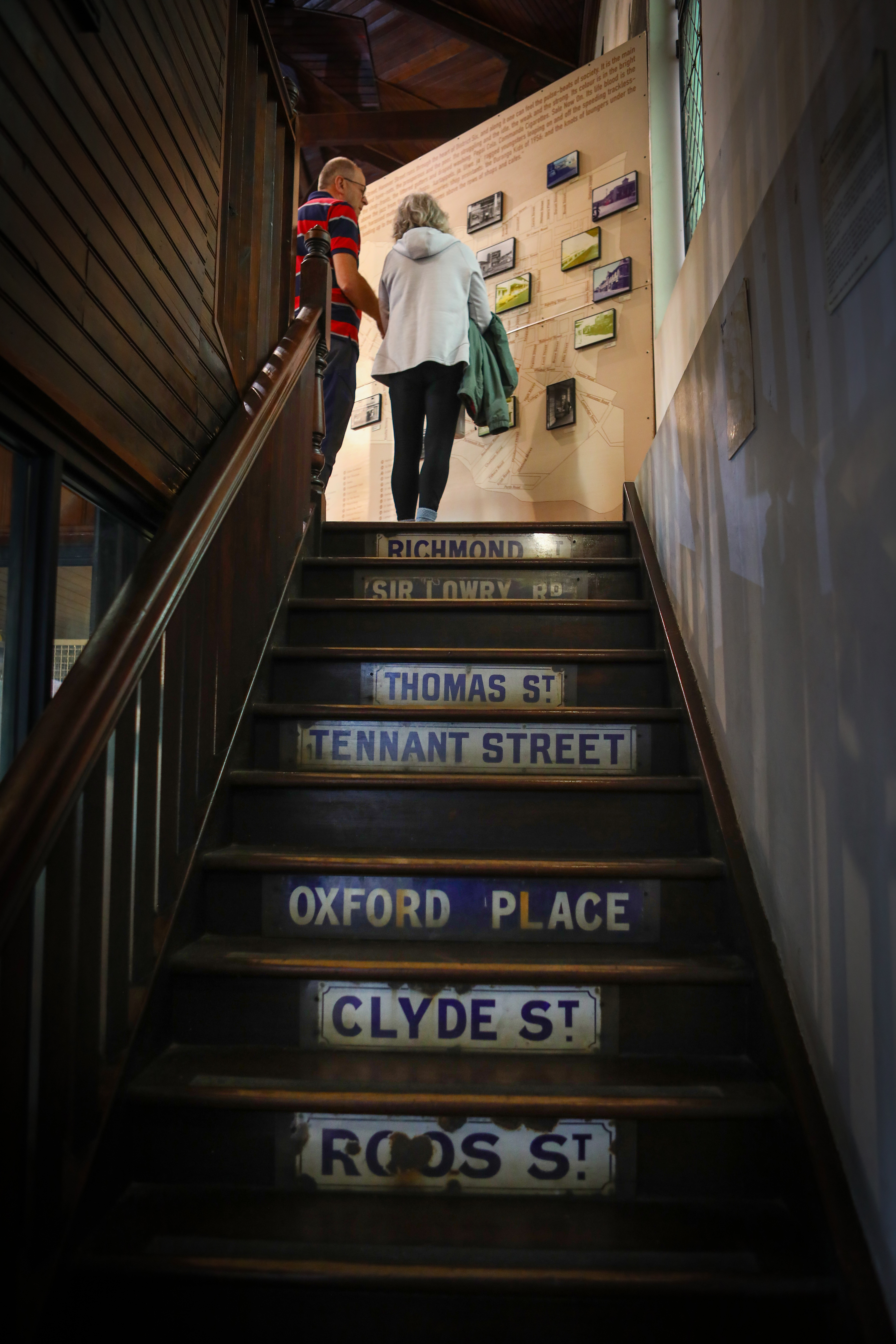
Street names from District Six in Cape Town that were torn down before the area was demolished. They have been placed on steps inside the museum that lead to the balcony, 24 April 2023. (Photo: Shelley Christians)
She emphasised the importance of using multisensory, layered and compelling storytelling techniques by using vivid and precise descriptions that benefit not only those who are blind and partially blind, but also those who are sighted.
During the workshop, a strong connection resulted in a digital story about Sandra Dee who, like Kewpie, was a daughter of District Six. This approach to storytelling emphasises the significance of making audio-visual content accessible online to blind, partially blind, deaf and hearing-impaired people.
Smith describes the experience of working with Strachan and Visser as having a “responsibility to ensure we relay ability consciousness to others”. She says adding several new layers to the sensory experience of the museum is relevant for all communities today.
“We push boundaries through storytelling in order to ensure we keep the memory of District Six alive, both in our content and in the ways in which we share these memories with the world,” says Smith.
Strachan leans forward and her body weight meets the mass of the wall where her fingers trace the word she cannot see: Dreams. DM168
Florence de Vries is a communications specialist and journalist whose primary research interests are in the fields of mental health and the ethics of care.
This story first appeared in our weekly Daily Maverick 168 newspaper, which is available countrywide for R25.
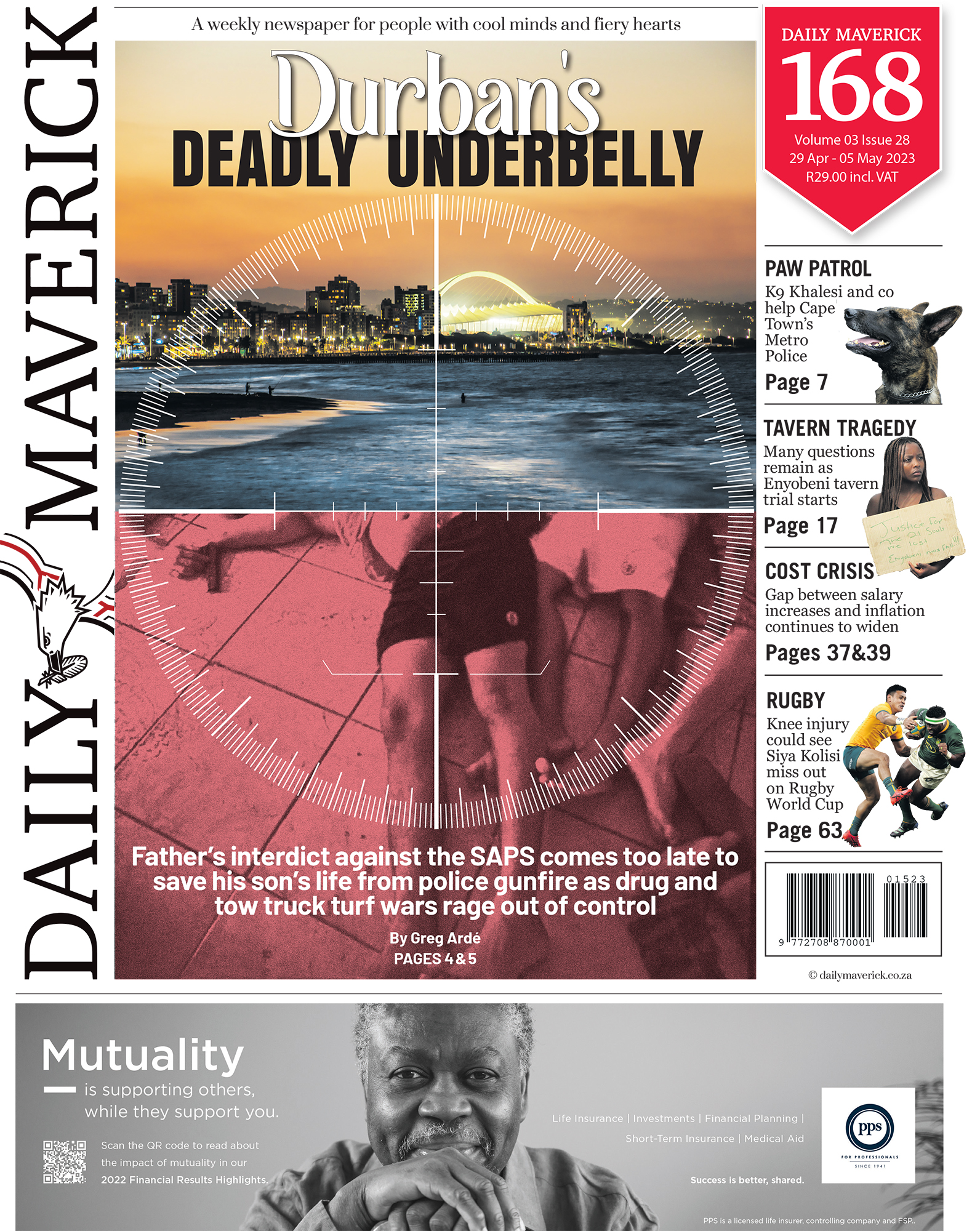




















 Become an Insider
Become an Insider
Comments - Please login in order to comment.